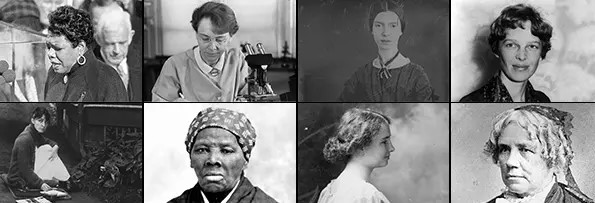Authors:
Historic Era: Era 10: Contemporary United States (1968 to the present)
Historic Theme:
Subject:
November/December 2004 | Volume 55, Issue 6


Authors:
Historic Era: Era 10: Contemporary United States (1968 to the present)
Historic Theme:
Subject:
November/December 2004 | Volume 55, Issue 6

It is trivializing women’s history to suggest that "baby has come a long way" in the last 50 years. Women have always considered their past, often through genealogies, storytelling, oral histories, and even quilts. But, in the last half-century, women’s history in books and articles has come of age.
Today, it is still mostly women who are its chroniclers. Most men avoid women’s history. This is not necessarily a bad thing, but it does suggest the degree to which symmetry—true equality of an androgynous fellowship—continues to elude us in everything from housework to the writing of history. To a much greater extent than in the field of black history, which whites do not hesitate to enter, women’s history remains largely a gender-segregated preserve, what Charlotte Perkins Gilman once designated as Herland.
A previous generation of determined pioneers of “herstory” deserves credit for the emergence of women’s history as a legitimate subject. Their fundamental insight, encouraged by the feminism of the 1960s and 1970s, was that the personal was the political. Along the way, the field has changed the mainstream understanding of what a proper study of the past must include.
In the case that women historians have explicitly made, if history is to offer a context for both present and future, it must not simply be a consideration of public events and male leaders. A paraphrase of Alexander Pope serves as an appropriate slogan for the social history that women historians have taught their compatriots: “How small a part of all mankind endures/That part that laws and leaders can cause or cure.” To ignore women in history is to misunderstand the entire organization of any society.
Accordingly, the women’s history of today has spawned new historical study of topics such as family history, reproduction, sexuality, marriage, and courtship, as well as investigations of institutions and politics. No longer simply an exercise in filling in the shadows and giving compensatory time to women worthies, or noting their contributions, the field has established a new tapestry for all historians to embroider. And it is often ordinary folk who become its subject matter, whether anonymous members of the suffrage movement or textile workers in the early-20th-century South.
Today, women’s history is no longer a backwater; nor is the profession of history a male craft. On the contrary, the field has developed its own structures. These include collections of primary sources available online, meetings of historians at the Berkshire Conference on the History of Women, journals, and even controversies, such as that over the relation between private and public spheres, or over the issue